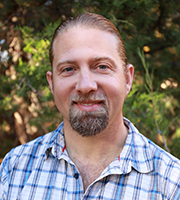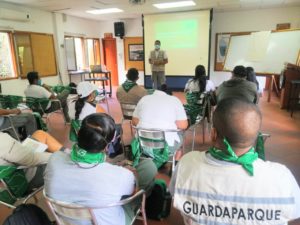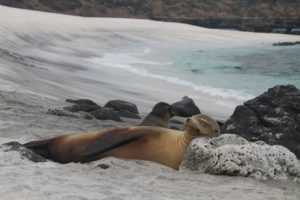For the past 29 years, the Center for Protected Area Management at Colorado State University has offered a Colorado-based Spanish-language training course on managing protected areas, but the primary focus has always been on terrestrial environments.
Today as marine area reserves grow in number, so does the need to train managers and rangers for managing marine protected areas. In response, CPAM is set to create a yearly training program called the Coastal-Marine Protected Area Management Course in Ecuador’s Galapagos National Park in 2022. The course is set to draw in rangers and managers from marine reserves around the world.
“Obviously, in Colorado we’re in the mountains and that’s easier for us to focus on here, but without a doubt the biggest increase in new protected area acreage over the next decade will be marine protected areas,” said Ryan Finchum, CPAM co-director. “There’s a lot of need, so we decided we’d create a course like the one we do yearly in Colorado but together with our long-term partners in the Galapagos Islands.”

The islands have a significant protected area where almost 97 percent of the land surface of the islands is a national park, as well as all of the waters surrounding the islands, extending multiple nautical miles outward for a total of 133,000 square kilometers of protected marine reserve.
CPAM’s course will teach on-the-ground practices including how to manage fisheries, how to deal with conflicts, how to do biological marine monitoring, and best practices for marine ecotourism in protected areas.
“Since our inception we have been adapting and finding new ways that we can, on an ongoing basis, support protected area managers in their capacity-building needs, both individually and institutionally,” Finchum said.
Effects of COVID-19 on marine reserve areas
A recent CPAM three-day workshop on environmental interpretation for public use on Santa Cruz Island addressed changes in tourist behavior that posed issues of managing the protected area effectively.
“Once tourism started to come back after the pandemic, people weren’t going right back to the cruise ships. A lot of people were coming to local visitor sites and this created conflicts with local people and challenges for the rangers,” Finchum said.
In these areas, park rangers struggled to communicate with tourists the potential impacts on things such as sea turtle nesting habitats.
“It’s a very specific need, helping them basically in an emergency response to the current situation they are facing,” Finchum said of the workshop’s purpose. “Our partners in the Galapagos National Park needed to get the park rangers training in communication and also provide motivation and make sure they felt supported. The have a big job to fulfill in conserving the Galapagos and we want to provide as much support as we can.”

The workshop trained 18 park rangers on communicating potential tourist impacts effectively. Among the four workshop instructors was Audrey Ramsey, a CPAM capacity development assistant and recent graduate of the Conservation Leadership Through Learning master’s program at CSU.
Many students from the program in the Warner College of Natural Resources have routinely participated in CPAM’s efforts.
“The workshop allowed for participants to reimagine the way they interact with the public,” Ramsey said.
“In the past it’s been a very different role for park rangers of the public use sector who were highly focused on maintenance and just general control,” Ramsey said. “However, now with the increased tourism, there’s a lot more need to connect with people on a deeper level, rather than just pointing a finger and saying no.”
It is the willingness to adapt and the use of innovative practices that has made the Galapagos National Park an ideal place to teach the Marine Protected Area Course in 2022, Ramsey said.
“There’s a lot of marine protected areas being created. While it’s great to create an area, the proper management of it is the part that really matters,” Ramsey said. “The hope is that we can help spread the good practices from the Galapagos model to other places in the world while also allowing Galapagos to continue to learn from other marine protected areas.”
A collaborative future
Today, CPAM and the Galapagos National Park are in the final stages of completing a Memorandum of Understanding, a formalized agreement to conduct collaboration into the future. It cements a relationship between CSU and the Galapagos National Park Service.

The memorandum will essentially aid CSU in sharing its land grant mission in the Galapagos Islands.
The University’s ability to tackle real world problems and involve students in the process is part of what has made CSU so innovative, creating a sense of hope for a more sustainable future, Finchum said.
“As a land grant university, CSU is at the forefront of working on the most challenging problems our society faces,” Finchum said. “Those challenges motivate our faculty, students and centers like CPAM to contribute in a meaningful way to real world challenges, just like we are doing in the Galapagos.”